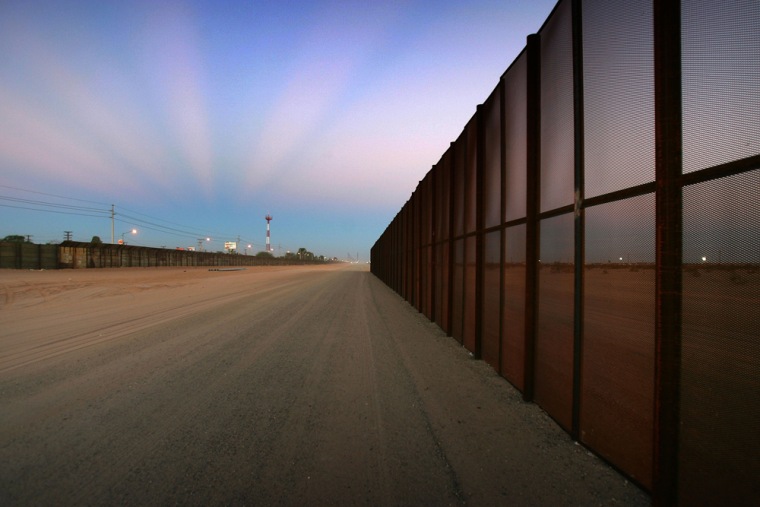BURBANK, Calif. — We got one major thing right in our predictions for 2007. Immigration is proving to be a contentious issue, and it’s a safe bet that will continue throughout 2008. Here’s a look back at some of our predictions from a year ago (in regular type) and the specifics (in italics) of how we did.
A new Congress responds to immigration issues
Now that Democrats run Congress, they may be more willing to go along with Bush’s call for a guest worker program than Republican conservatives were. However, it’s doubtful that the new congress will fully fund the border wall. Democrats will have to balance the concerns of Latino constituents with the rising public outcry over illegal immigration.
:
What we didn’t foresee was the complete collapse of President Bush’s effort at immigration reform. The public polarization over the issue resulted in paralysis in Congress as members became afraid of the consequences of going along with the president’s proposals.
***
The Latino Vote :
As the candidates and parties gear up for the 2008 presidential race, the Latino vote will be very much on their minds. Pollster Jim Zogby estimates that a heavy voter registration drive could produce an electorate that’s 10 percent Latino.
As Democrats dance around the immigration issue, Republicans will have to work hard to counteract charges that they’re anti-immigrant. The spotlight will be on key competitive states such as Florida, Arizona, Colorado and New Mexico, where Latinos represent a significant percentage of the population.
:
This held up pretty well. A new survey by the Pew Hispanic Center shows that 57 percent of Latino registered voters now call themselves Democrats or say they tilt to the Democratic party. About 23 percent say they’re aligned with the Republican party — all of this driven by a Latino perception that some Republicans, talking tough about illegal immigration, harbor a deeper bias against Hispanics. Pew researchers say that Latinos could be a swing vote in competitive states with large numbers of Latinos.
***
Smart borders — how much?
There’s been a lot of talk about how high-tech devices, sensors and video cameras can assist the U.S. Border patrol in securing the thousands of miles of border with Mexico and Canada. In the 2007 Homeland Security bill, Congress appropriated $1.2 billion to construct physical and electronic barriers at the border.
Some watchdog groups complain that this technology could wind up costing many more billions of dollars without putting a significant dent in illegal immigration. Look for a flurry of stories in 2007 about potential cost overruns for devices that don’t work as well as promised.
:
It may not have been a “flurry of stories” but there were plenty of complaints that the high-tech “virtual fence” hasn’t worked as planned. The Department of Homeland Security has given Boeing Integrated Defense Systems until the end of the year to fix the software problems that have prevented the cameras, radar detection devices and sensors from functioning properly.
A new president in Mexico
Mexico’s new President, Felipe Calderon, got off to a rocky start, winning by a razor-thin margin in an election that was protested by his leftist opponent. The big question for Calderon in 2007 is whether he can do much to improve Mexico’s economy and create more jobs south of the border, factors that would help stem the flow of illegal immigrants to the United States.
:
Mexico needs to create 1.3 million new jobs annually to keep pace with population. Calderon bragged in October that his administration had created 825,000 jobs in the first three quarters of the year. Critics dispute those numbers, saying many of those jobs are temporary and low paying, and that the numbers themselves are suspect. While some sectors of the Mexican economy, such as construction and telecommunications, appear to be booming, the record is decidedly mixed.
***
Cities, states go after illegal immigrants
Responding to public concern about illegal immigrants, cities and states are enacting measures to punish them. In Texas, as the state legislature gets ready for the 2007 session, lawmakers have filed a mound of bills that would deny welfare to the children of illegal immigrants and levy taxes on money transfers to Mexico. Look for other states and cities to follow suit with similar punitive measures.
:
These efforts have resulted in litigation throughout the country as the American Civil Liberties Union and immigrant rights groups seek to overturn local laws aimed at curbing illegal immigration. Judges have agreed that the federal government, not the states and the cities, are responsible for enforcing immigration laws. Meanwhile, a growing number of local law-enforcement agencies are checking the immigration status of people they arrest and drawing criticism for engaging in racial and ethnic profiling.
***
George Lewis is an NBC News correspondent based in Burbank, Calif. Click here to see his predictions for 2008.
